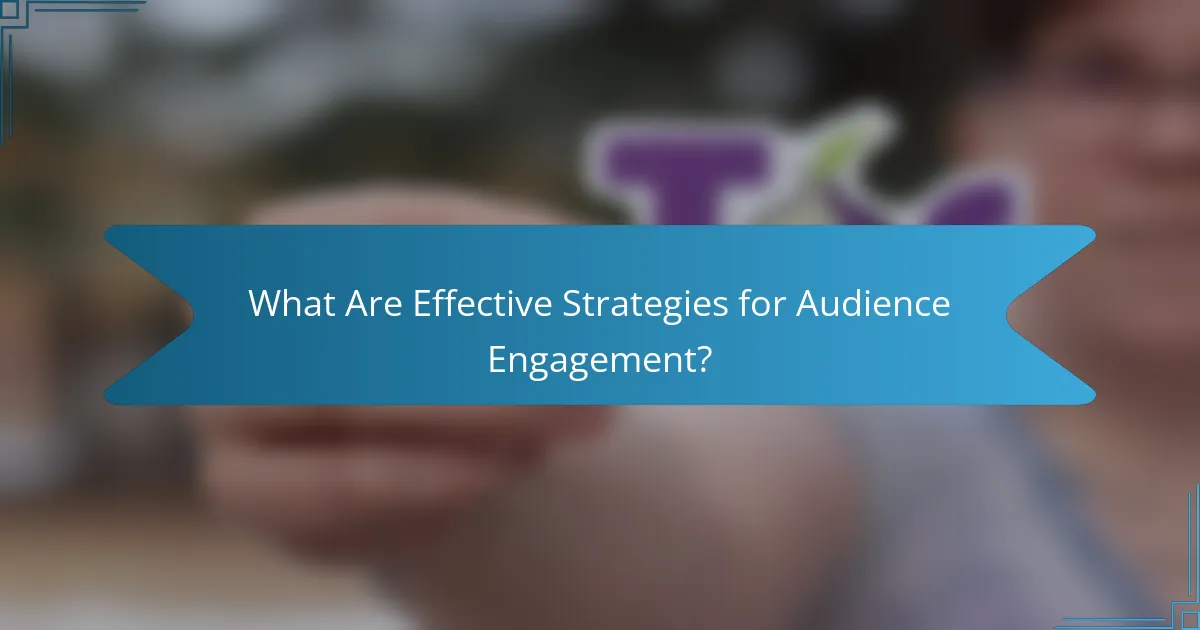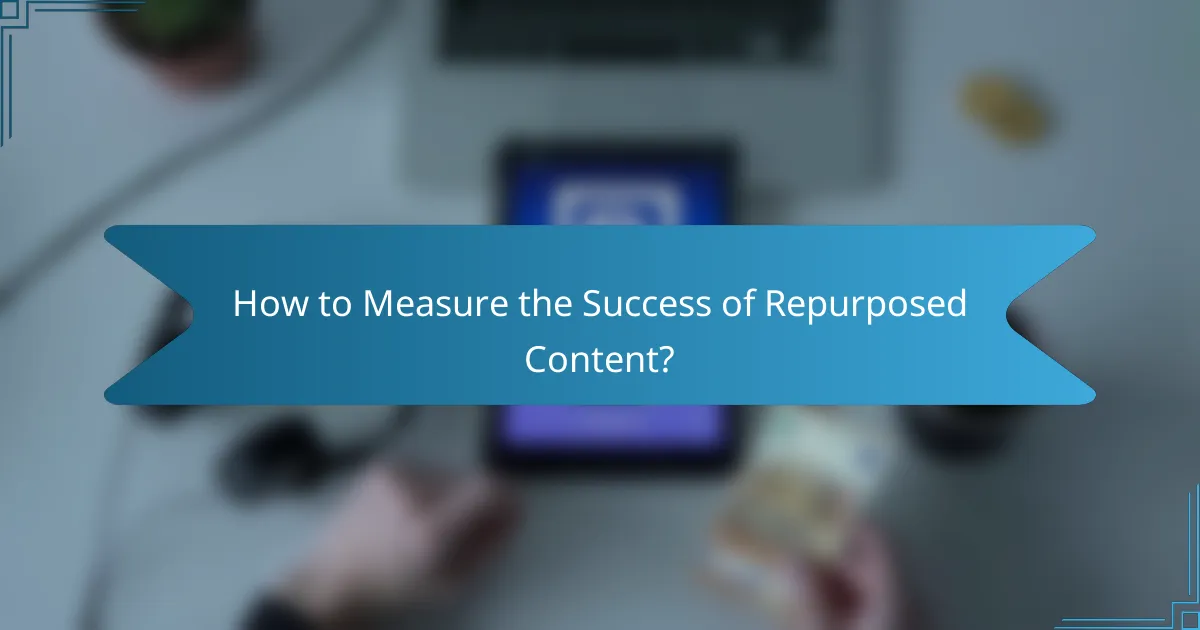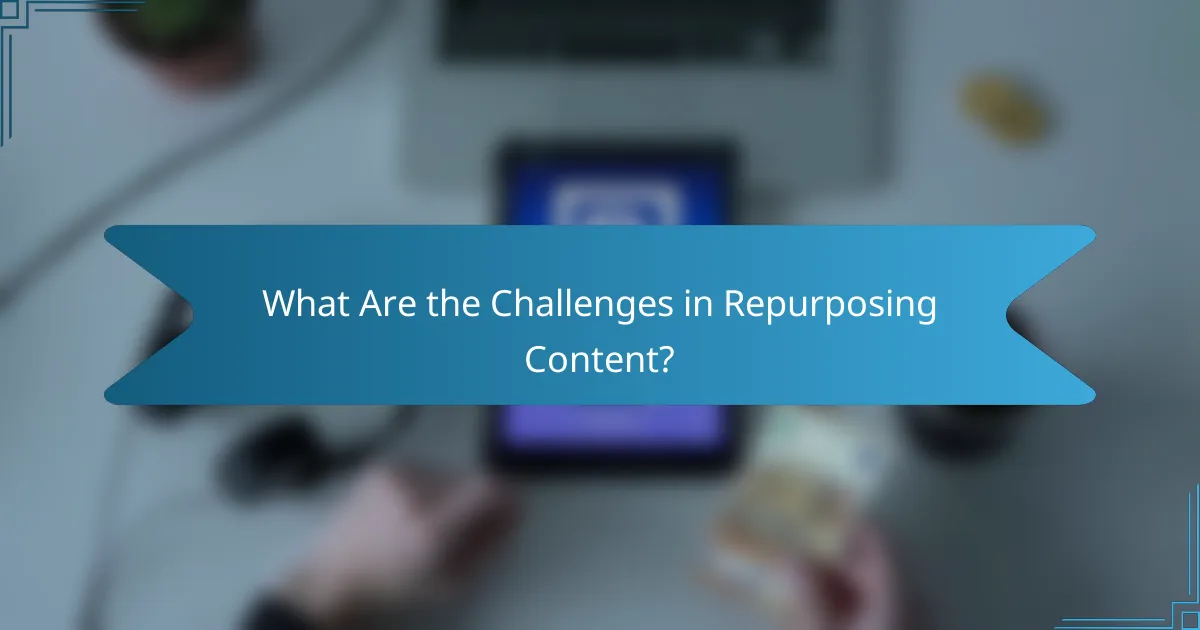Repurposing content is a strategic approach that involves optimizing your messaging and format for different platforms to enhance audience reach and engagement. By tailoring your content to fit the unique characteristics of each channel, you can create meaningful interactions that foster loyalty and drive conversions. Additionally, measuring the success of your repurposed content through various metrics is essential to understanding its effectiveness in connecting with your target audience.

How to Optimize Content for Different Platforms?
To optimize content for different platforms, tailor your messaging and format to suit each platform’s unique characteristics and audience preferences. This approach enhances engagement and ensures your content resonates effectively across various channels.
Platform-specific formatting
Each platform has its own formatting requirements that can significantly impact how content is perceived. For instance, Instagram favors visually striking images and short captions, while LinkedIn is more suited for professional articles and detailed posts. Adapting your content’s structure, length, and style to fit these formats is crucial.
Consider using bullet points for clarity on platforms like Twitter, where brevity is key, and long-form articles for platforms like Medium, which support in-depth discussions. Always check the latest guidelines for each platform to ensure compliance with their standards.
Audience targeting strategies
Understanding your target audience is essential for effective content optimization. Different platforms attract distinct demographics; for example, TikTok appeals to younger users, while Facebook has a broader age range. Tailor your messaging to resonate with the specific audience of each platform.
Utilize audience insights and analytics tools to identify preferences and behaviors. Create personas based on these insights to guide your content creation, ensuring it aligns with the interests and needs of your target demographic.
Content adaptation techniques
Adapting content involves modifying the message to fit the platform while maintaining its core value. For instance, a blog post can be condensed into an infographic for Pinterest or transformed into a video for YouTube. This not only extends the content’s reach but also caters to different consumption preferences.
Consider repurposing successful content by changing its format or angle. A webinar can become a series of short clips for social media, while a podcast episode can be summarized in a blog post. This approach maximizes the value of your existing content.
Analytics for performance tracking
Tracking analytics is vital for understanding how well your content performs across different platforms. Use tools like Google Analytics, social media insights, and platform-specific metrics to gauge engagement, reach, and conversion rates. This data helps refine your strategies over time.
Focus on key performance indicators (KPIs) such as click-through rates, shares, and comments to assess effectiveness. Regularly review and adjust your content strategy based on these insights to improve future performance and audience engagement.

What Are Effective Strategies for Audience Engagement?
Effective strategies for audience engagement focus on creating meaningful interactions and connections with your audience. By utilizing various techniques, you can enhance participation, foster loyalty, and ultimately drive conversions.
Interactive content formats
Interactive content formats, such as quizzes, polls, and surveys, encourage active participation from your audience. These formats not only capture attention but also provide valuable insights into audience preferences and behaviors.
Consider using tools like Typeform or SurveyMonkey to create engaging surveys. Aim for a mix of fun and informative content, ensuring that interactions are quick and easy to complete, ideally taking just a few minutes.
Personalization tactics
Personalization tactics involve tailoring content to meet the specific needs and interests of your audience. This can include using data to segment your audience and deliver targeted messages that resonate with different groups.
For example, email marketing campaigns can benefit from personalized subject lines and content based on previous interactions. Aim for a personalized approach that increases relevance, which can lead to higher open and click-through rates, often improving engagement by significant margins.
Community-building approaches
Community-building approaches focus on creating spaces where your audience can connect and engage with each other. This can be achieved through social media groups, forums, or live events that foster a sense of belonging.
Consider platforms like Facebook Groups or Discord for creating online communities. Encourage discussions and user-generated content, which can enhance loyalty and keep your audience engaged over time. Regularly facilitate interactions and provide value to maintain active participation.

How to Measure the Success of Repurposed Content?
Measuring the success of repurposed content involves evaluating its performance across various metrics to determine its effectiveness in reaching and engaging the target audience. Key indicators include engagement rates, audience growth, and return on investment (ROI).
Key performance indicators
Key performance indicators (KPIs) for repurposed content typically include metrics such as page views, social shares, comments, and time spent on the page. Tracking these metrics helps assess how well the content resonates with the audience.
Another important KPI is conversion rate, which measures how many users take a desired action after engaging with the content, such as signing up for a newsletter or making a purchase. Aim for a conversion rate that aligns with industry standards, often ranging from 1% to 5% depending on the sector.
Tools for tracking engagement
Several tools can effectively track engagement for repurposed content. Google Analytics is a popular choice, providing insights into user behavior, traffic sources, and conversion tracking. Utilize its features to set up goals and monitor user interactions.
Social media analytics tools, such as Hootsuite or Buffer, can also help measure engagement on various platforms. These tools offer metrics like likes, shares, and comments, allowing you to gauge audience interaction and adjust your strategy accordingly.
ROI analysis methods
To analyze the ROI of repurposed content, start by calculating the total cost of content creation and distribution. This includes expenses related to design, writing, and promotion. Then, compare this cost against the revenue generated from the content to determine profitability.
Another method is to use the formula: ROI = (Net Profit / Cost of Investment) x 100. A positive ROI indicates that the repurposed content is effective, while a negative ROI suggests a need for strategic adjustments. Regularly review and refine your approach based on these insights to maximize returns.

What Are the Best Practices for Repurposing Content?
Effective repurposing of content involves strategically adapting existing materials for different platforms to maximize audience reach and engagement. Best practices include conducting thorough content audits, managing a content calendar, and understanding legal considerations to ensure compliance and protect intellectual property.
Content audit processes
A content audit is essential for identifying which pieces of content can be repurposed effectively. Start by assessing performance metrics such as engagement rates, shares, and conversions to determine which content resonates with your audience. This process helps prioritize high-value content that can be adapted for various formats.
During the audit, categorize content by type, such as blog posts, videos, or infographics, and evaluate their relevance to current trends. Consider creating a spreadsheet to track the status of each piece, noting potential repurposing ideas and the platforms where they could be shared.
Content calendar management
Managing a content calendar is crucial for organizing repurposed content across multiple platforms. A well-structured calendar helps you plan when and where to share each piece, ensuring consistent messaging and optimal timing for audience engagement. Utilize tools like Google Calendar or Trello to keep track of deadlines and publishing schedules.
Incorporate a mix of original and repurposed content in your calendar to maintain variety. Aim for a balanced approach, dedicating specific days for sharing repurposed content while allowing for fresh material. Regularly review and adjust your calendar based on audience feedback and performance analytics.
Legal considerations for repurposing
When repurposing content, it’s vital to consider legal aspects such as copyright and licensing. Ensure that you have the right to use the original material, especially if it includes images, videos, or quotes from other creators. If necessary, obtain permissions or licenses to avoid potential legal issues.
Additionally, be aware of any platform-specific regulations regarding content sharing. For instance, social media platforms may have unique guidelines for reposting or adapting content. Familiarize yourself with these rules to ensure compliance and protect your brand’s reputation.

What Are the Challenges in Repurposing Content?
Repurposing content can be beneficial, but it comes with several challenges that can hinder effectiveness. Key issues include resource allocation, maintaining audience engagement, and ensuring the content fits various platforms.
Resource allocation issues
One of the primary challenges in repurposing content is effectively allocating resources, including time, budget, and personnel. Organizations often underestimate the effort required to adapt existing content for different formats or platforms.
For instance, transforming a blog post into a video or infographic may require hiring graphic designers or video editors, which can strain budgets. It’s essential to assess the potential return on investment (ROI) before committing resources to repurposing efforts.
To optimize resource allocation, consider creating a content calendar that outlines which pieces will be repurposed and when. This approach helps in planning and ensures that team members are aware of their responsibilities, reducing the risk of overlap or missed deadlines.
